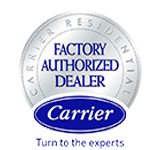Although the winter months are a time many people look forward to, it can be quite a challenge to keep warm during this season. Rest assured, however, if you follow the right advice, you’ll be able to enjoy the comforts of your home regardless of how cold it is outside.

Getting to Know Your Ductless Heat Pump
It pays to maximize the features of your ductless heat pump. If you have a unit like this, here we list the steps you can take to make this possible. But first, what are ductless heat pumps? Your local AC repair team shares an overview here:
A ductless heat pump system, like a mini-split, portable or window air conditioner, delivers heated and cooled air to individual rooms or small areas within a house. It uses a two-way heat pump to make this happen. Their many benefits make them quite popular in comparison to ducted systems.
Components of Ductless Heat Pumps
To fully grasp how this system works, here are the most significant parts that every homeowner should know about:
1. Evaporator. Arranged in coils of copper tubing, this material extracts heat from the indoor air and expels it into the refrigerant. Once the heat is removed from the air and is sufficiently cool, it’s then recirculated into the room.
2. Condenser. Unlike the evaporator coils that absorb heat from the air, this particular coil releases the heat absorbed by the refrigerant to the outdoors. The refrigerant is compressed and converted to hot gas as absorption of the room temperature occurs. Then it’s circulated through the coils.
3. Refrigerant. Air conditioning replacement pros say that when it’s summertime, refrigerant extracts heat from the air inside and releases it outside. Conversely, during the winter, refrigerant pumps heat into the room by absorbing it from the outside air.
4. Compressor. The compressor increases the gaseous refrigerant’s temperature by compression to create pressure differences.
5. Expansion valve. The expansion valve is designed to expand the liquid and reduce both the temperature and pressure.
Maximize the Use of Your Heat Pump
This equipment doesn’t generate heat, but rather moves warmth from one place to another. This is proof that heat pumps are a necessity when it’s chilly outside. To ensure good performance with mindful winter heat pump use, here are tips you can follow:
- Clean and replace your air filters. While this may be a simple task, it’s one which is guaranteed to make a significant difference. Keep in mind that the filters in a ductless system are much smaller than those in a traditional unit, which means they get dirty more quickly. It’s advisable to have your ductless heat pump’s air filters cleaned or replaced before the cold winter months come around.
- Don’t rely on emergency heat. Air conditioning replacement experts recommend saving emergency heat for actual emergencies. Otherwise, your utility bills will quickly increase.
- Get the proper sizing. While an oversized ductless mini-split heat pump may keep your home comfortable in the winter, it will fail to dehumidify your home while in cooling mode in the summer. Don’t forget that you also need to be able to count on your ductless mini-split unit for cooling in the summer.
- Insulate your home. Indeed, homeowners do their best to keep the cold outside, using methods such as air sealing and tightening doors and windows. Ensuring that these barriers against the cold are substantial is one of the best ways to make the most of any heating system, even ductless ones. Strong insulation and seals will keep the warm air inside your house, which will keep your family cozy and your heating bills low.
- Learn how to set the right temperature. AC troubleshooting system teams note that your ductless heat pump’s thermostat sensors aren’t placed on the wall, unlike a regular thermostat. They’re closer to the ceiling because that’s where the air is usually warmer. This means you’ll need to tweak your temperature settings a bit until you find what’s best for your home’s interior. Moreover, while thermostat sensors are positioned above, you may only have to set it at 70 to 72 degrees to keep the room cool.
- Protect the outdoor unit. Installing an overhang above the outdoor compressor to protect it is a great idea. Elevate your outdoor unit a foot or two to prevent it from coming into contact with the wet ground as snow and ice melt. If snow plugs the unit, this will drastically reduce performance.
- Trust ‘defrost mode.’ This mode scares some homeowners. However, defrosting frozen system components is part of regular winter operation. Be aware, though, that this cycle is typically short, and if your system stays in this mode for a long time, your unit may require heating repair services.
Maintaining Your Heat Pump
AC repair companies note that all appliances are prone to deterioration over time. Fortunately, you can easily guarantee its longevity by performing proper preventive upkeep procedures. Here are some things to consider:
- Depending on the need, have your indoor air filters cleaned or replaced at least every 2-6 weeks.
- Check to see if there’s damage to the outdoor pipe covering, dirt clogging the outdoor coil or oil drips at or below the piping connections at the unit.
- Keep debris and snow away from the outdoor unit. Prune back shrubs and plants at least 18 inches from all sides of the heat pump to allow for proper airflow and servicing.
- Polish your outdoor coils regularly. If they get dirty, make use of a heavy-duty degreaser and hose them down.
- Schedule professional service at the intervals recommended for an inspection by the manufacturer or your trusted local technician, unless you spot problems sooner, to avoid spending more in the future.
Air Products & Services has been serving the local community since 1979. We provide a full range of services, including residential and commercial AC troubleshooting system inspection, repairs and replacements. Call us at (818) 875-7231 or fill out our contact form to request a free consultation. We serve customers in Tarzana, CA, and the surrounding areas.




